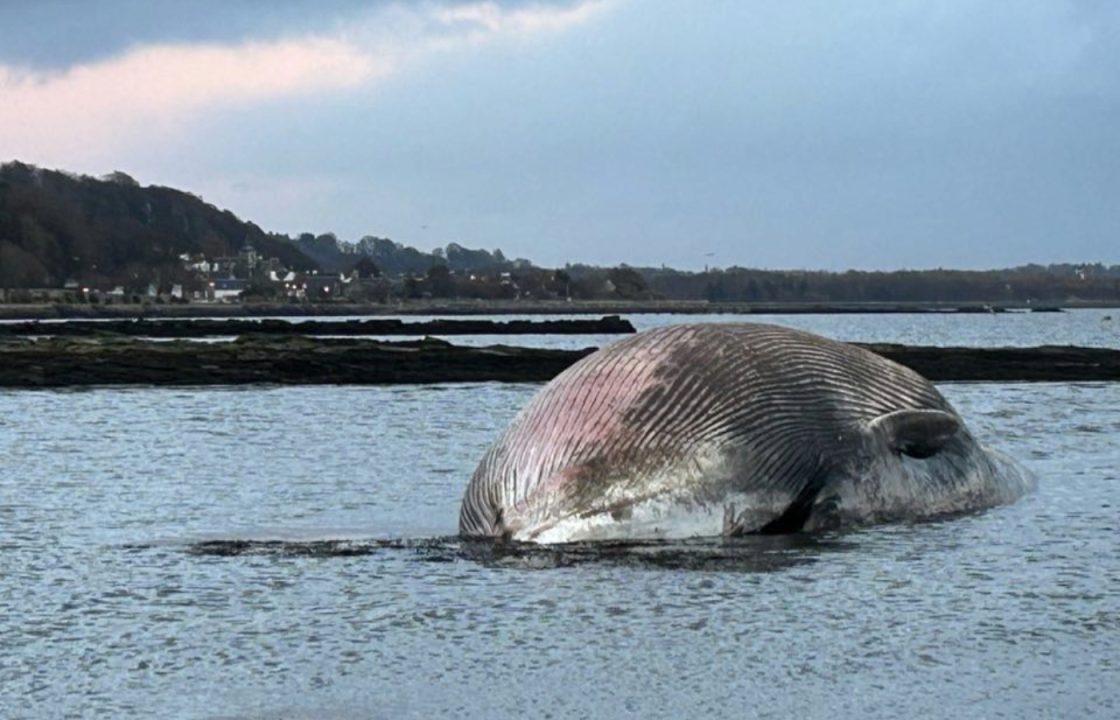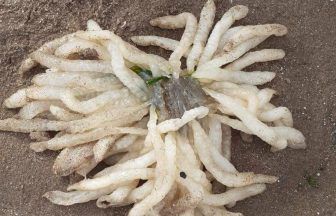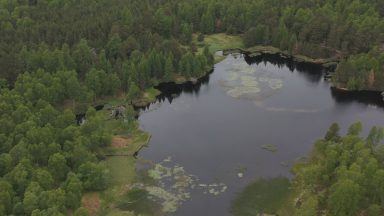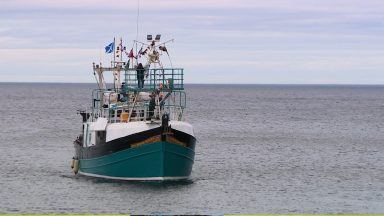The carcass of an 17-metre fin whale that washed up on a Scottish shoreline last week will not be removed.
The discovery of the massive mammal was made by a member of the public in the village of Culross, Fife, at around 4.30pm on Wednesday, January 24.
Footage was captured of the 17-metre whale washed up on the shoreline with efforts under way last week on how best to remove the carcass from the water.
An on-site assessment was made by teams from Fife Coast and Countryside Trust (FCCT) but a final decision was postponed.
Various methods of disposing of the remains were discussed including burial, towing it to sea or transporting the carcass to landfill or by incinerating it.
After consultation with multiple representatives, the decision was taken to let the whale’s body decompose naturally in its current position.

FCCT say this will enrich the coastal environment with nutrients and provide an important food source for wildlife during the winter period.
Members of the public are being advised not to access the shoreline while the carcass is monitored by teams.
Robbie Blyth, head of operations at FFCT, said: “When possible, biologists and veterinarians from the Scottish Marine Animal Stranding Scheme examine a carcass and conduct a necropsy to try to learn why the mammal may have died.
“On this occasion the whale had already started to putrefy and was not suitable for investigation.
“This is one of the reasons we have decided not to recover the carcass. Also, its location – at the foot of the railway embankment coastal defences – would have presented a challenge in recovering it.
“The location is relatively inaccessible to beach users and dog walkers and we believe that leaving it in situ causes the least disruption to locals and visitors.
“The decision not to recover the carcass has been made after full consultation with key stakeholders and partners including Fife Council, community representatives, Network Rail, Forth Ports, Forth Estuary Forum, NatureScot, SEPA, and Marine Scotland.”
Danny Groves from Whale and Dolphin Conservation said: “It is always distressing to see such an awesome ocean creature like a large whale looking helpless on the shoreline.
“It is believed that this whale is a fin – the second largest creature on our shared planet, but what caused he or she to strand like this will only be known after tests on samples taken from the whale.
“Sometimes we never discover exactly, but many manmade threats can cause them to wash up dead or alive.
“These include loud underwater noise pollution from exploration for oil and gas or military exercises in the area, collisions with boats, and entanglement in fishing nets or gear.
“Some may get disorientated whilst following prey or simply fall ill.
“What makes this incident all the more tragic is that we need more whales alive to keep the ocean healthy.
“Growing whale populations helps us in our fight against climate breakdown because they help deliver and circulate nutrients in the ocean.
“For example, it is estimated that by restoring blue whales to their pre-whaling numbers would have the same positive impact on the climate as planting more than 280 million trees.”
Follow STV News on WhatsApp
Scan the QR code on your mobile device for all the latest news from around the country
























